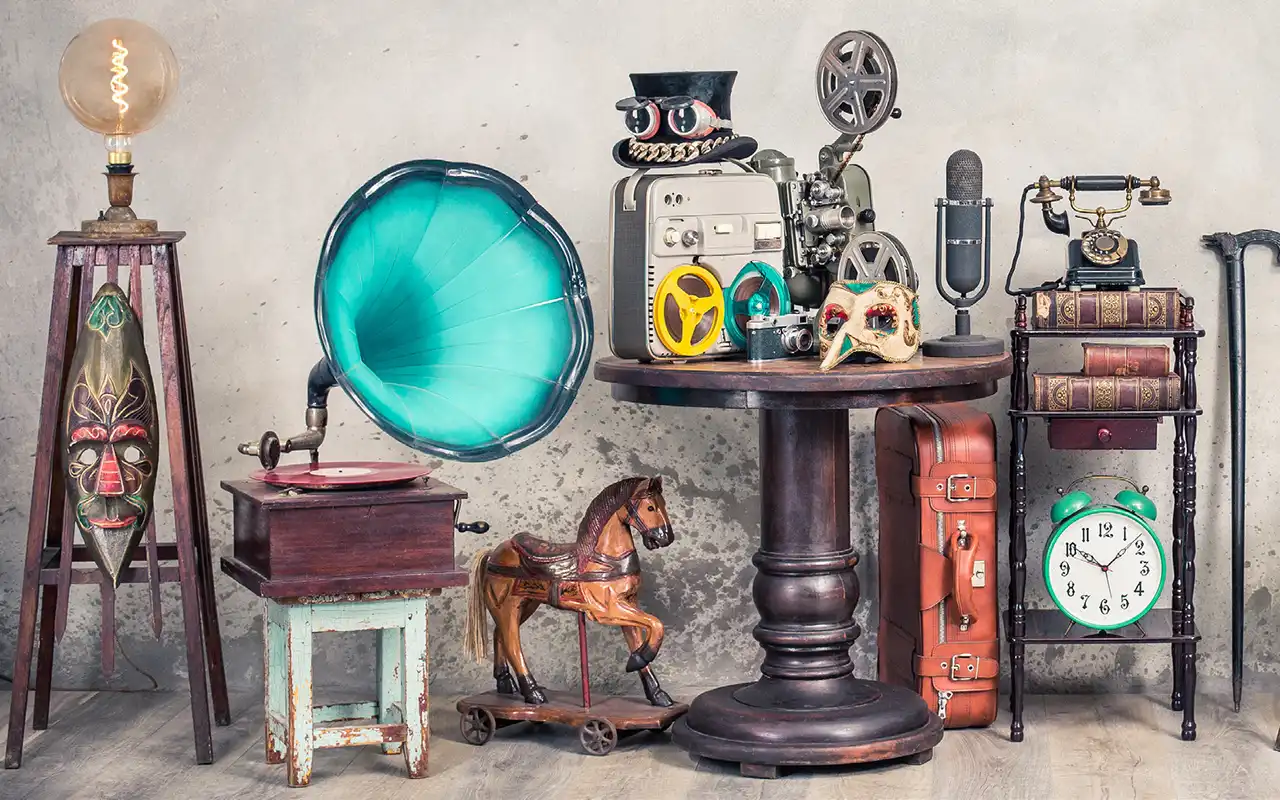At Large

The Museum Effect
‘Tis the season. Winter is now a fading memory. With warmer temperatures, windows and doors open, and the brackishness of closed houses drifting away, it’s time to offer up our trinkets and treasures to the annual tradition of yard sales.
Based on the geographic origin of our childhoods, our designation for this rite of spring can be quite different. Call them yard sales, rummage sales, tag sales, or garage sales (we once heard a young contestant searching through boxes of abandoned Lego blocks furtively ask “Why are they selling their garage?”), the effect is the same. Items rescued from attics, the back of desk drawers, boxes relegated to the basement, and dusty corners of the garage appear on tables strewn across the front yards of neighboring houses. Ads have been placed. Signs have been fashioned with colorful cardboard and markers. Fingers crossed for sunshine, the day begins.
Cars with out-of-state license plates magically appear parked along the street and seasoned inspectors with specific agendas move rapidly among the displayed items. Garden tools? Novels? Sets of dishes? Hummel figurines? Retired power washers? American Girl dolls? Ten-speed bicycles? Children’s clothes? Hand saws? Paper weights? There is truly no accounting for the appetites of those who power through the display tables, pick up one or two items, then scurry back to their cars to pursue the scavenger hunt down the road.
Prices, of course reflect the desire of the seller to avoid having to re-pack the loot at the end of the day. The longer grandma’s hand mixer sits in the sun, the lower the price becomes until someone appears and, diverting their eyes, asks “Will you take a quarter?”
Sold!
Although the thrill of the sale may overshadow any other sensation at that very moment, the question remains … often unanswered: Why did we have that thing in the first place? What possessed us to hang onto the chipped bookends from our aunt’s house? Did we really think that the slightly warped tennis rackets that were stuffed in a box in the garage behind the half bag of potting soil were important?
How about a “divorce sale”?
Filmmaker Marc Silverstein and actor Busy Philipps documented their indoor, slightly unusual, in-Manhattan yard sale in a recent issue of The New Yorker. The two have been divorced for over three years, but objects accumulated in the time they were together had been silently waiting in a rented storage unit. It was time for the “divorce sale.” Out came the useful and the unusual.
Dividing the space between them, books, picture frames, small appliances, and furniture were offered for review and sale. As Busy is quoted, “Once you live without something for three and a half years and you open up a box and look at it, you’re like ‘Wait, do I need that?’”
It is our nature
Do we need that? No. Do we keep it? Yes, we do. We are collectors. It is embedded in our DNA and evident every time we decide to slip some random memento in a drawer rather than into the trash bin. After all, for some, it is not who we are, but what we have. And, fortunately, for some, it is not what we have, but what we can give away.
Our homes, no matter how modest, have become museums to our nature. The photos placed on tables, the tea set gathering dust on a high kitchen shelf, the football jersey from a (frankly) less than stellar high school career, folded and forgotten in a bedroom closet, are all parts of the museum collection that roughly defines us. Why keep that and not something else? What do the things we have held on to – our museum collection – say about us?
This is not a screed designed to sweep every piece of memorabilia off of the living room side table and into the trash. It is merely a question. What does our personal museum and its colorful collection say about us?
Moments frozen in time
Passing through the living room and seeing a ceramic bird acquired on a decades old trip to Mexico gives us a momentary reflection of a pleasant time with friends, now lost to history. No matter that there is a small chip out of the figure, the memory lasts without damage.
Moments frozen in time – the intersection of impulse and nostalgia that put that item, that picture, into our personal museum – are the moments that matter. Pleasant memories, homage to long-passed family members, momentary flashes that bring a smile, even a laugh – they are all important.
But that old tennis racket and the power washer that was so cumbersome that we used it only once before pushing it further into the darkest reaches of the garage? Put a price on them – a bargain price – and let the museum archives be better for their departure.
